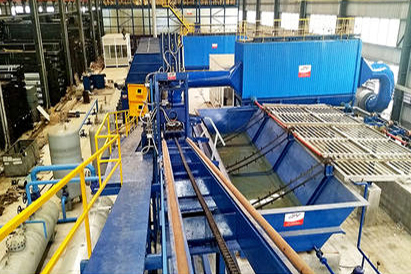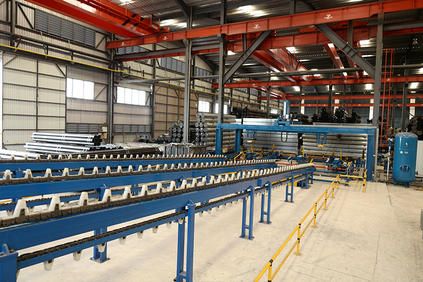Galvanizing is a process of applying a protective layer of zinc to steel or iron to prevent corrosion. The process is commonly used in the manufacture of pipes, especially those used in various industries such as construction, oil and gas, and water supply. Galvanizing standards for pipes are critical to ensuring the quality and durability of galvanized pipes. Let’s dive into the details of pipe galvanizing standards and what they mean in a pipe galvanizing line.
Pipe galvanizing standards are mainly set by the American Society for Testing and Materials (ASTM) international organization. ASTM sets specific standards for the galvanizing process, which include the thickness of the galvanized layer, the adhesion of the coating, and the overall quality of the galvanized surface. These standards are critical to maintaining the integrity of galvanized pipe and ensuring its performance in a variety of applications.

One of the key standards for galvanized pipe is ASTM A123/A123M, which specifies the requirements for galvanized coatings on steel products, including pipes. This standard outlines minimum coating thickness, adhesion and finish for galvanized pipe. It also provides guidelines for inspection and testing of galvanized coatings to ensure compliance with standards.
In pipe galvanizing lines, compliance with ASTM A123/A123M standards is critical to producing high-quality galvanized pipe. The galvanizing process typically involves several stages, including surface treatment, hot-dip galvanizing and post-processing. Each stage must adhere to ASTM standards to achieve the required coating thickness and quality.

Surface preparation involves cleaning the pipes to remove any rust, scale or other impurities that may prevent the galvanizing layer from adhering. This step is critical to ensure proper adhesion of the galvanized coating to the pipe surface. The hot-dip galvanizing process involves immersing cleaned pipes in a bath of molten zinc, which metallurgically bonds to the steel to form a protective coating.
After the galvanizing process, the pipe will undergo post-processing, which may include quenching, passivation or checking coating thickness and adhesion. These post-processing steps are critical to verify that galvanized pipe meets the requirements of ASTM standards and is ready for use in a variety of applications.
Complying with pipe galvanizing standards not only ensures the quality and durability of the pipe, but also contributes to its long-term performance and corrosion resistance. ASTM-compliant galvanized pipe is suitable for outdoor, high-humidity and corrosive environments, making it ideal for applications such as water distribution, structural support and industrial piping systems.
In summary, the pipe galvanizing standards defined by ASTM International play a vital role in the pipe galvanizing production line. Compliance with this standard ensures that galvanized pipe meets the necessary requirements for coating thickness, adhesion and overall quality. By following ASTM standards, manufacturers can produce high-quality galvanized pipe that provides superior corrosion protection and service life in a variety of industrial and commercial applications.
Post time: Mar-29-2024
